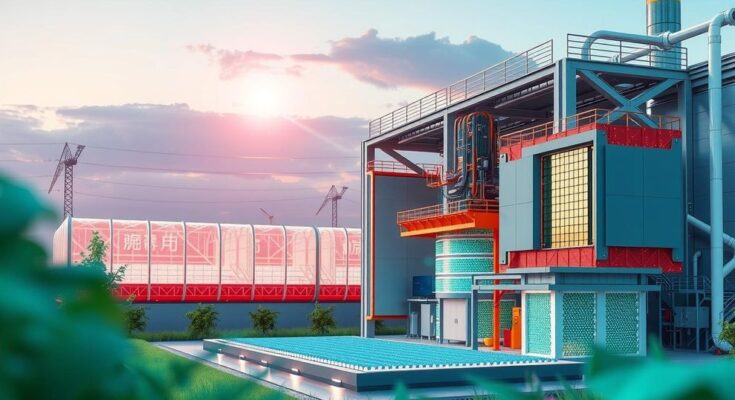Costa Rica is positioning itself to compete with Taiwan in semiconductor manufacturing, having established a partnership with the U.S. to enhance production capacity. This move is part of a broader strategy outlined in a National Semiconductor Roadmap. With stable renewable energy resources, Costa Rica aims to attract semiconductor companies facing challenges in Taiwan due to rising energy costs.
Costa Rica is setting its sights on competing with Taiwan in semiconductor manufacturing. In 2023, the Central American nation established a partnership with the United States to enhance semiconductor production, diversifying sources away from geopolitical risks. The Costa Rican Ministry of Foreign Trade published an extensive National Semiconductor Roadmap, detailing the country’s vision for expanding its semiconductor industry, known as the “Silicon Jungle.”
This initiative was further validated by U.S. Secretary of State Marco Rubio, who emphasized the importance of semiconductors in a recent summit with Costa Rican President Rodrigo Chaves Robles. The U.S. State Department affirmed, “Our partnership with Costa Rica is paying dividends,” noting that U.S.-trained technicians are strengthening supply chains, thereby mitigating possible future disruptions.
Costa Rica’s political and economic stability, which has historical roots due to its avoidance of colonial labor systems, has allowed it to pivot from an agriculture-based economy to one focused on technology. The partnership with Intel, initiated in the 1990s, marked a significant shift towards high-tech manufacturing, showcasing the country’s adaptability.
Despite a decline in production following Intel’s shift towards Asia, a recent $1.2 billion investment to revamp Costa Rica’s assembly line highlights a resurgence in the sector. Factors contributing to this reversal include increased geopolitical tensions surrounding Taiwan and challenges arising from its energy policies, notably the move away from nuclear power.
Taiwan’s historical reliance on nuclear energy facilitated its emergence as a semiconductor powerhouse, but recent political decisions have led to rising electricity costs due to the increased dependence on fossil fuels. TSMC, the leading chip manufacturer, reported that electricity prices in Taiwan have surged significantly, making it the highest among its operating regions.
Furthermore, TSMC and other firms are actively seeking renewable energy sources to meet a growing demand for sustainable practices in manufacturing. Costa Rica, generating almost all its electricity from renewable resources, presents an attractive alternative for semiconductor production, as it offers consistent, clean energy.
Experts agree that Costa Rica’s substantial renewable energy portfolio positions it favorably against Taiwan, which must navigate energy challenges. The shift in focus towards clean energy in Costa Rica not only enhances its semiconductor industry prospects but also aligns with global demands for environmentally responsible practices, providing a competitive edge.
In conclusion, Costa Rica’s strategic developments in semiconductor manufacturing, coupled with its stable renewable energy production, create a compelling case for its emergence as a key player in the intricate global supply chain, potentially rivaling Taiwan’s traditional dominance.
In summary, Costa Rica’s initiatives to expand its semiconductor production through U.S. collaboration and the establishment of a robust National Semiconductor Roadmap reflect a significant shift towards technology. With its renewable energy resources positioning it favorably, the country is seizing the opportunity to mitigate global supply chain risks and cater to the increasing demand for sustainable practices in the semiconductor industry, aiming to rival Taiwan’s established market.
Original Source: www.motherjones.com




